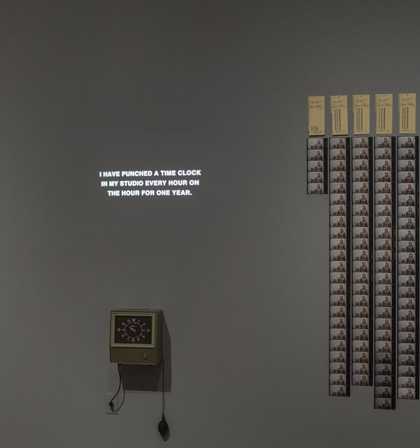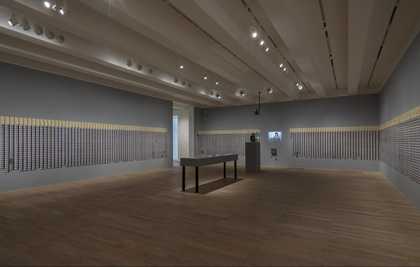Tehching Hsieh is a pioneering figure in the history of performance art, with works challenging conventional conceptions of time and labour. This exclusive talk coincides with the installation at Tate Modern of his seminal work One Year Performance 1980-1, in which he recorded himself punching a time clock every hour for a year.
The event will be chaired by Lois Keidan, a co-founder and the Director of the Live Art Development Agency, and will also feature a response to Tehching Hsieh’s work by the critic and curator Amelia Groom (editor of the collection Time in the Documents of Contemporary Art series).
Biographies
Tehching Hsieh
Tehching Hsieh was born on December 31st 1950 in Nan-Chou, Taiwan. Hsieh dropped out from high school in 1967 and took up painting. After finishing his army service (1970-73), Hsieh had his first solo show at the gallery of the American News Bureau in Taiwan. Shortly after this solo show, Hsieh stopped painting. He made a performance action, Jump, in which he broke both of his ankles. He trained as a seaman, which he then used as a means to enter the United States. In July of 1974, Hsieh finally arrived at a small port near Philadelphia. He was an illegal immigrant in the States for fourteen years until he was granted amnesty in 1988. Starting in the late 1970s, Hsieh made five One Year Performances and a Thirteen Year Plan’, inside and outside his studio in New York City. Using long durations, making art and life simultaneous, Hsieh achieved one of the most radical approaches in contemporary art.The first four One Year Performances made Hsieh a regular name in the art scene in New York; the last two pieces, intentionally retreating from the art world, set a tone of sustained invisibility. Since the Millennium, released from the restriction of not showing his works during the thirteen-year period, Hsieh has exhibited his work in North and South America, Asia and Europe. Hsieh lives In Brooklyn and is represented by Sean Kelly Gallery.
Amelia Groom
Dr. Amelia Groom is a writer based in Amsterdam. She completed a PhD in Art History & Theory at the University of Sydney in 2014, focusing on 'disorderly' temporalities in contemporary art. She edited the Whitechapel Documents of Contemporary Art anthology TIME, and her writing has been published in a range of journals, monographs and exhibition contexts. Since 2014 she has taught on the Critical Studies MA programme at the Sandberg Instituut in Amsterdam.
Lois Keidan
Lois Keidan is the Co-Founder and Co-Director of the Live Art Development Agency (LADA). Previously she has been Director of Live Arts at the Institute of Contemporary Arts, London, responsible for national policy and provision for Performance Art at the Arts Council of Great Britain, worked at The Midland Group, Nottingham and Theatre Workshop, Edinburgh, run an independent record label and managed various bands.
This film file is broken and is being removed. Sorry for any inconvenience this causes.
Tate Research Centre: Asia has been generously supported by the Andrew W. Mellon Foundation.


